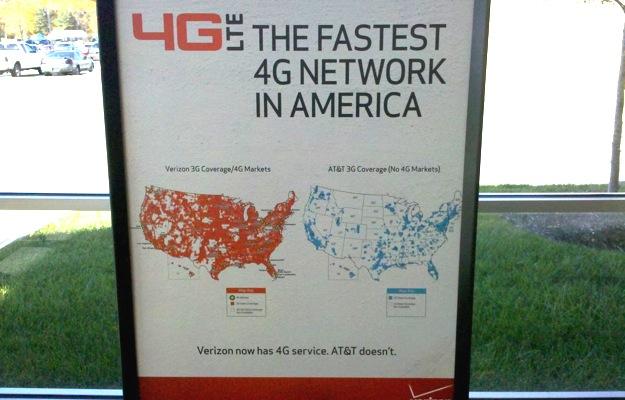 We’ve all been there: Excited to buy the latest version of something – a video game system, a mobile device, whatever – and then, someone goes and points out that you haven’t even finished with the previous version you purchased. If you think that kind of embarrassment is limited to people, however, think again: Verizon has just learned otherwise, thanks to a rebuke from the Federal Communications Commission.
We’ve all been there: Excited to buy the latest version of something – a video game system, a mobile device, whatever – and then, someone goes and points out that you haven’t even finished with the previous version you purchased. If you think that kind of embarrassment is limited to people, however, think again: Verizon has just learned otherwise, thanks to a rebuke from the Federal Communications Commission.
Verizon needs FCC approval to purchase $3.6 billion worth of Advanced Wireless Services (AWS) band spectrum from a group of cable companies after the deal raised anti-trust concerns from competitors. According to Verizon, the purchase will assist with “consumer demand for wireless services and bandwidth” – which is to say, it will help with the carrier’s 4G-LTE network – and the company is willing to sell off other bandwidth it currently owns in order to curry favor with those worried about the deal. That, sadly, may be at the root of the FCC’s concerns.
In a letter sent to the company’s VP and Deputy General Counsel, John Scott III, yesterday, Rick Kaplan, chief of the Wireless Telecommunications Bureau at the FCC requested additional information about the deal, specifically in regard to the bandwidth Verizon has offered to sell and quite why the company hasn’t managed to get around to actually using it four years after buying it. Despite the bandwidth licenses having been purchased in 2008, the FCC writes,
Verizon Wireless has not yet deployed service in the Lower 700 MHz band. In light of the fact that Lower 700 MHz A and B Block licenses are required to build out a specified portion of their licenses by June 2013 or face a reduction in their license term, what steps to date, if any, has Verizon Wireless taken to deploy mobile services using the Lower 700 MHz A or B Block licenses (either or both)? On what timetable has Verizon Wireless been planning to deploy mobile service in these Lower 700 MHz spectrum blocks?
The letter continues in the same vein, asking for what may be stopping Verizon from using the purchased bandwidth, asking for an explanation of “the relevance, if any” of the announced sale, as well as demanding a listing of what steps have been taken to date to assist in the sale. Despite the polite tone of the letter, Kaplan cuts to the heart of the matter when he asks “Would Verizon Wireless abandon its plans to sell the Lower 700 MHz licenses if the Commission does not consent to the sale of all of the AWS licenses at issue to Verizon Wireless?”
While the continual essay-style questions may be easily answered by Verizon, the letter is a clear sign that the FCC is taking an interest in this deal beyond a simple cursory glance, something that Verizon may have hoped to avoid.
Editors' Recommendations
- 5G home internet: What is it, and should you get it?
- Live in a rural area? Verizon 5G is about to get better for you
- Does the OnePlus 11 have wireless charging? What you need to know
- Does the Apple iPad Pro (2022) have wireless charging? Here’s what you need to know
- Does the OnePlus 10T have wireless charging? What you need to know


